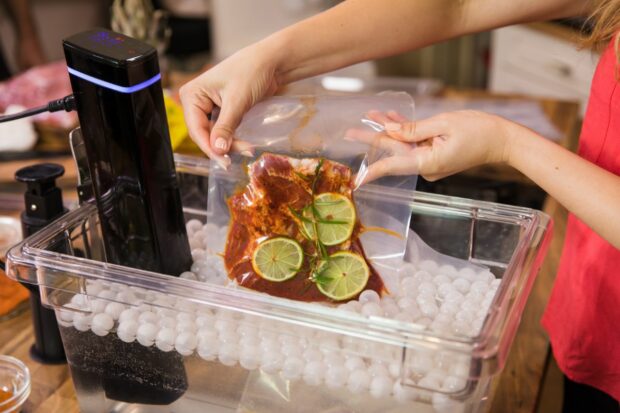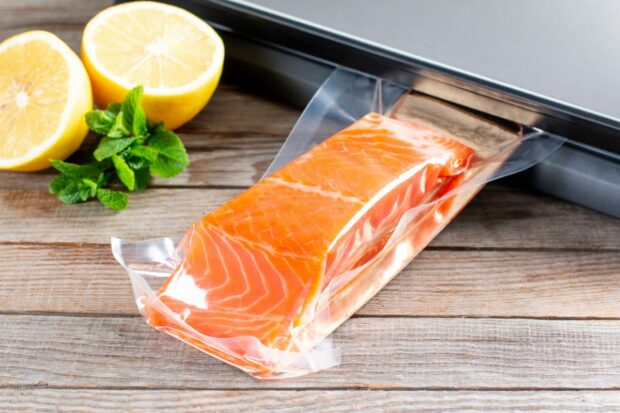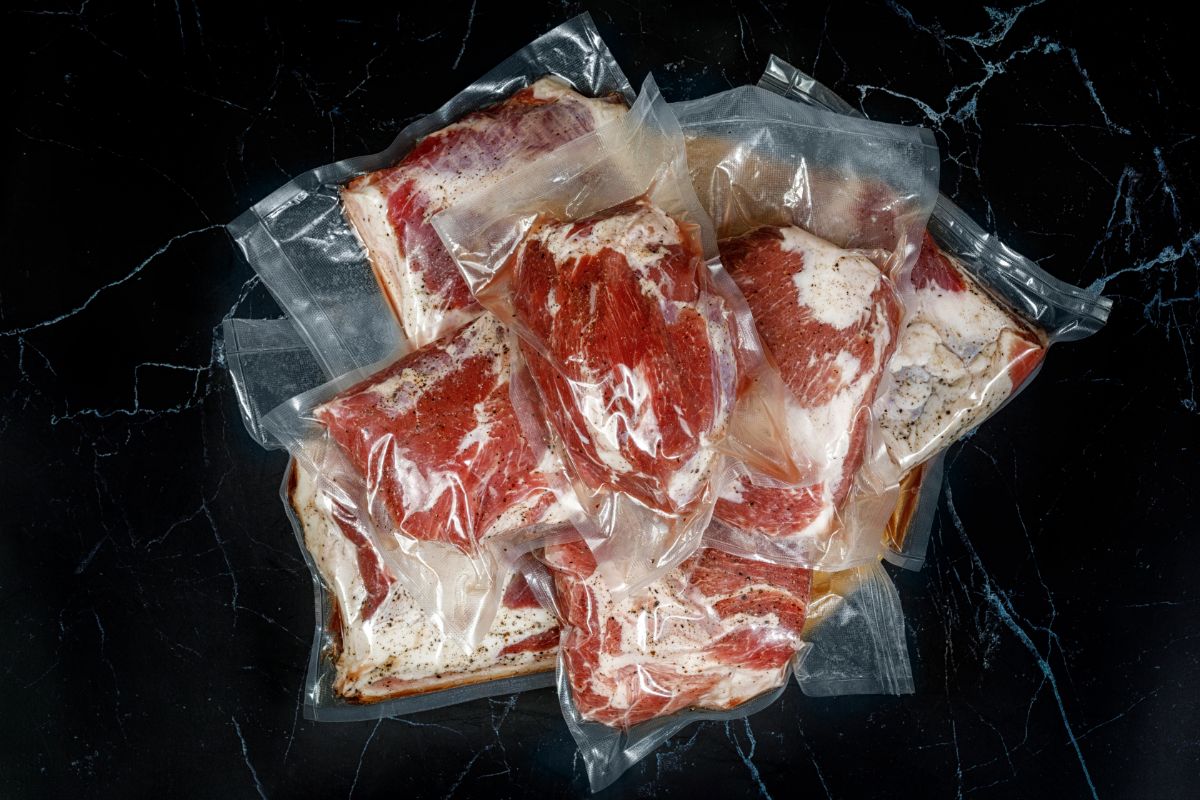We understand the temptation.
You get home from the store with a nice cut of meat sealed tightly in what looks like perfectly sturdy plastic. You glance at your sous vide water bath and consider just dropping it in there as is.
What could be the harm, right?

Can You Sous Vide in Original Packaging?
You can sous vide in original packaging under certain conditions:
- The plastic is food-safe.
- The plastic is temperature-safe.
- The bag is heat-sealed rather than glued.
If the packaging doesn’t meet these conditions, you’re better off removing the food from its package and re-bagging it in a dedicated sous vide bag or a heavy duty Ziploc bag.
Potential Hazards of Plastic Packaging
Leaks
Leaks are the most common problem. You don’t want the water bath coming into direct contact with your food. It’s not dangerous, it just ruins the texture.
Whether the original packaging will stay shut depends on whether it’s heat-sealed or glued. Heat-sealed packaging should hold up and avoid leaking, but glued packaging is likely to come apart as a result of the heat.
Cling wrap is also bad, because it always has gaps—even if they appear small.

Plastic Degradation
We’ve all heard the stats about how long it takes a plastic bag to degrade in the landfill—500 to 1,000 years seems to be the consensus—so why do we have to worry about plastic degradation during sous vide cooking?
Well, heat accelerates this degradation. Landfills don’t reach 195 degrees F, but a sous vide certainly can. And the longer the cooking time, the more degradation there’s likely to be.
Without getting too scientific on you, plastics are made of molecules called polymers that are built from smaller molecules called monomers. Prolonged exposure to heat loosens the bonds between both polymers and monomers. In short, they fall apart, and your plastic becomes—something else. This is called thermal degradation, and plastic that has undergone it will not be very good at protecting your food.
Toxicity
It’s a sad fact of plastic that most contain some chemicals capable of harming your health. “Examples of plastics contaminating food have been reported with most plastic types, including Styrene from polystyrene, plasticizers from PVC, antioxidants from polyethylene, and Acetaldehyde from PET,” writes the Ecology Center in Berkeley, California.
Most of this stuff has little chance of contaminating food at room temperature, but again, the calculation changes once things start to heat up.
If you don’t know the melting point or the degradation point of that random plastic bag you want to sous vide in, you’re taking a risk.

Which Plastics Are Safe for Sous Vide?
According to ChefSteps, the safest plastics are food-grade high-density polyethylene, low-density polyethylene, and polypropylene.
The “food grade” part is important. That means its bonds will hold up to the heat. The degree of food-safeness sometimes depends on the temperature, and you want your bag to be food-safe up to the boiling point of water (212 degrees F).
Vacuum-seal bags like FoodSaver are ideal.
Most brand name resealable freezer bags such as Ziploc and Glad will be safe, but check the packaging for a “food grade” or “food safe” label.
How Can You Tell Which Kind of Plastic You Have?
First, look for a triangular recycling symbol on the packaging and check what number it has inside.
- Recycling codes 2, 4, and 5 are fine.
- Codes 1, 3, 6, and 7 should not be used for sous vide.
If you intend to heat higher than 158 degrees F, it’s a good rule of thumb to double bag.
Never sous vide in plastic packaging that includes a foam tray, like those chicken breasts that are plastic wrapped over Styrofoam.
And of course, when in doubt, put your food in a new bag designed specifically for sous vide.
